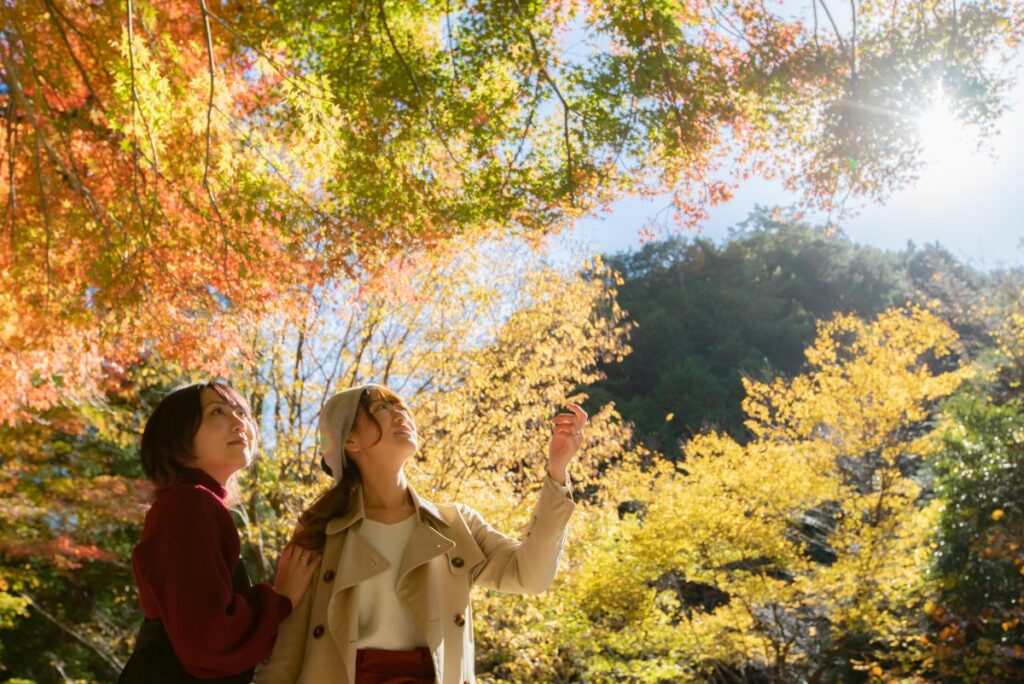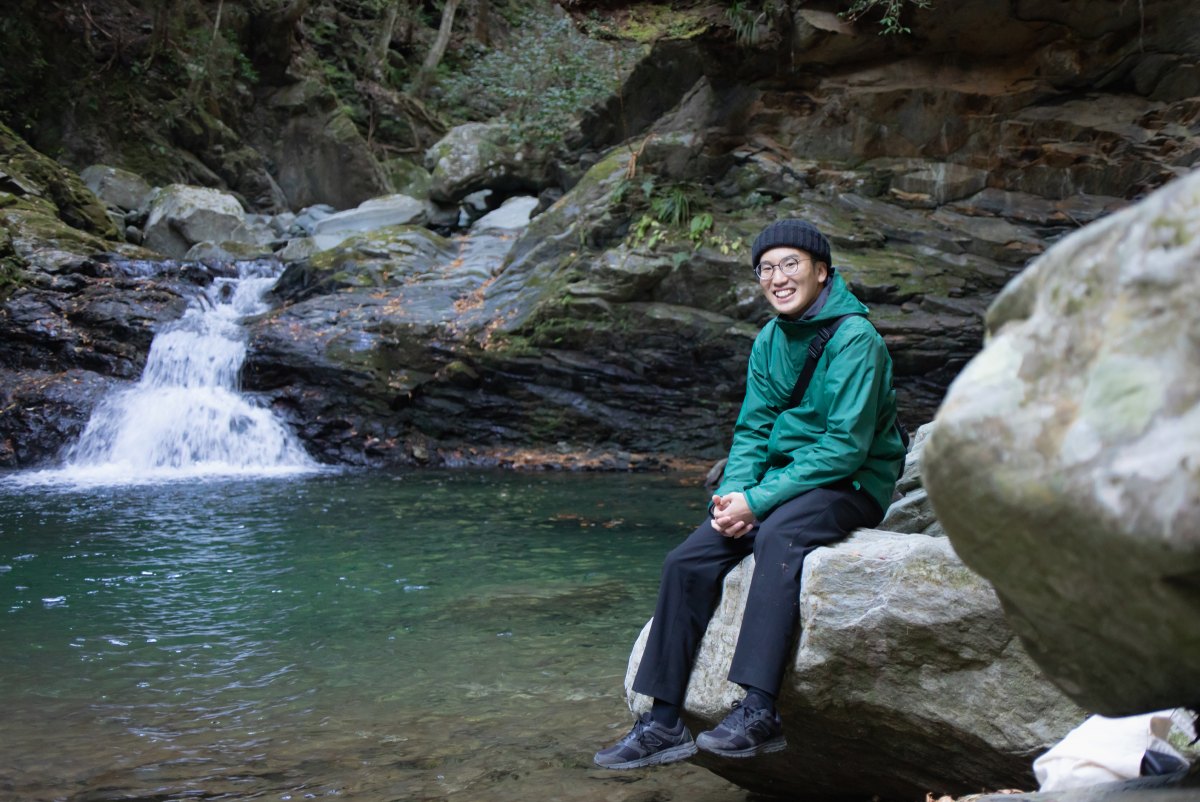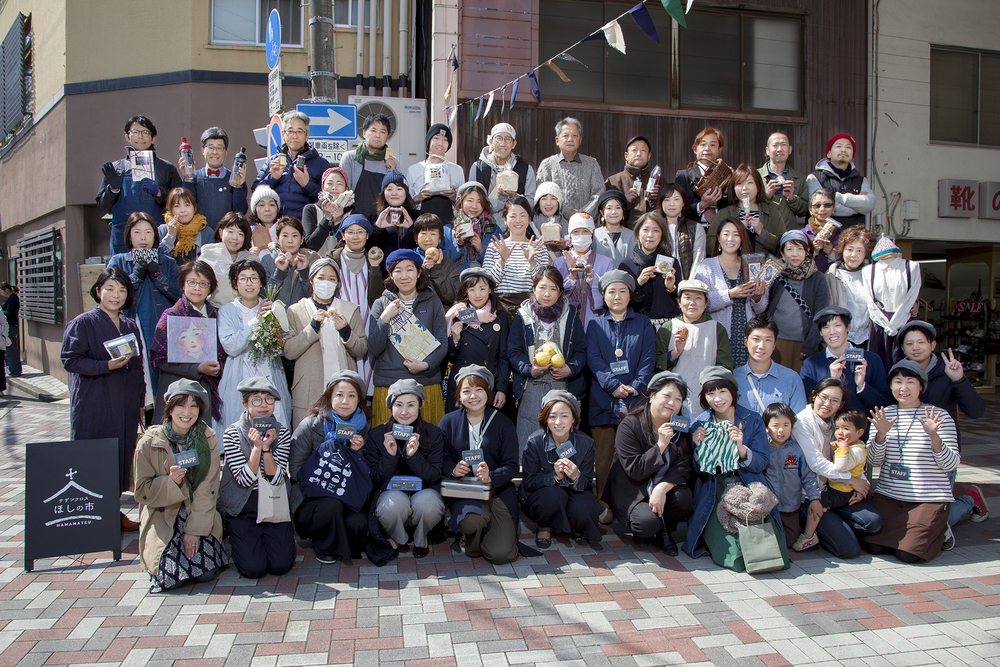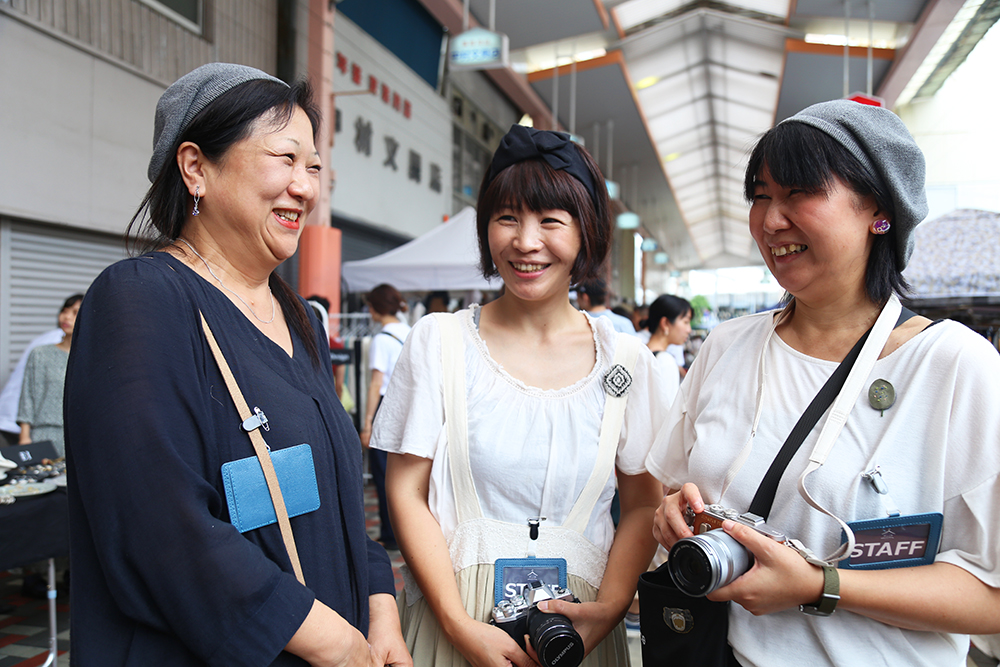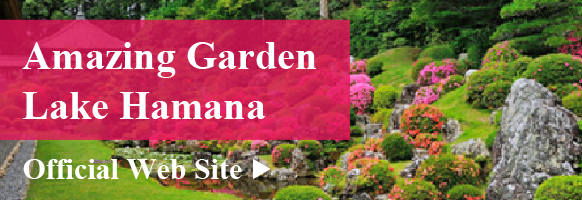Get to Know Hamamatsu
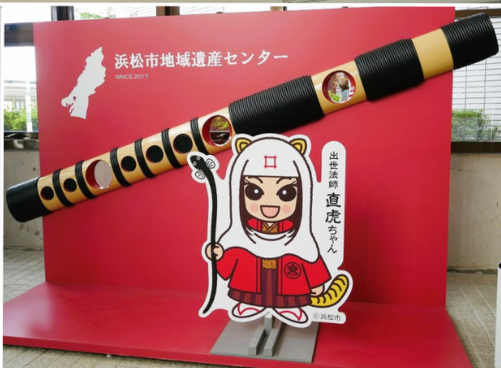
- Enjoy
6 years have passed since the taiga drama. Visit places related to Naotora around Iidani Castle
Ii Valley on the outskirts of Hamamatsu City is the birthplace of Ii Naomasa, one of the Four Heavenly Kings of Tokugawa Ieyasu.
In 2017, the taiga drama “Onna Castle Lord Naotora” (NHK) was broadcast, starring Naotora Ii, the lord of Iidani Castle and Naomasa’s foster parent.
This time, we will be presenting many images of the current surroundings of Iiya Castle, including a retrospective exhibition of the historical drama “Onna Castle Lord Naotora” being held at the Hamamatsu City Regional Heritage Center. Let’s go to the place related to Naotora!
A retrospective exhibition of the historical drama “Onna Castle Lord Naotora” is being held at the Hamamatsu City Regional Heritage Center.
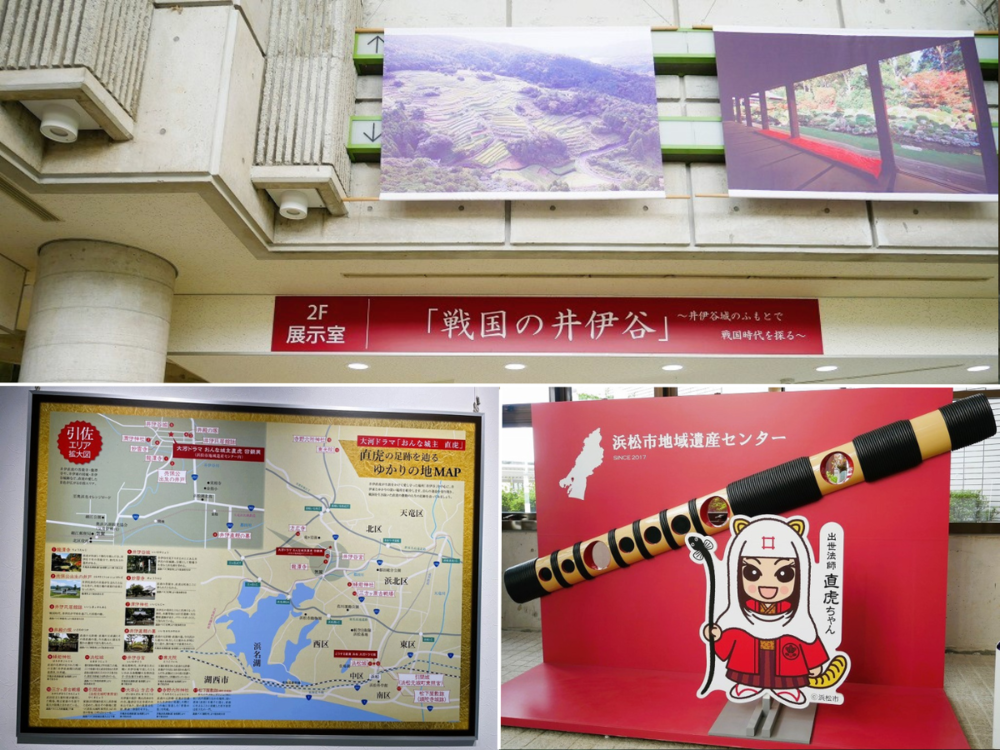
▲Top: Landscape of places related to Naotora (Kurumegi rice terraces and Ryutanji Temple), Bottom left: MAP of places related to Naotora, Bottom right: Face panel of Hamamatsu City’s mascot character, Shusei Hoshi Naotora-chan
Approximately 15 kilometers north-northwest of Hamamatsu Castle and JR Hamamatsu Station.
At the Hamamatsu City Regional Heritage Center in the Iitani district of Kita Ward, Hamamatsu City, a retrospective exhibition of the 2017 historical drama “Onna Castle Lord Naotora” is being held until January 14, 2024 (Sunday).
Naotora Ii, the main character of Onna Castle Lord Naotora, survives the turbulent Sengoku period as the head of the Ii family, as his father, grandfather, and fiancée Naochika Naochika all died one after another.
Naomasa (childhood name: Machiyo), who was raised by Naotora, is Naochika’s forgotten memento. He later became one of the Tokugawa Four Heavenly Kings.
When you enter the hall, you are first greeted by a large face panel of Naotora-chan, a career priest.
Hamamatsu Castle is also depicted on the map of places related to Ii Naotora. The title background screening for the first time in the drama is also a must-see.
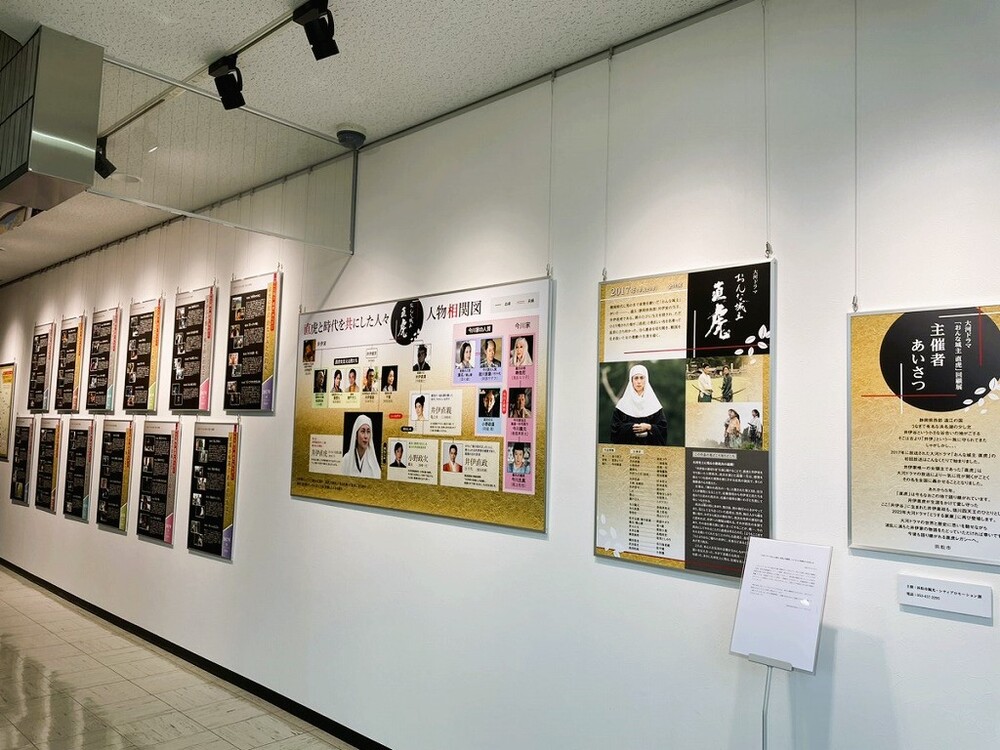
On the walls are panel displays that introduce character relationships and scenes from all 50 episodes. Please watch while listening to the nostalgic opening song.
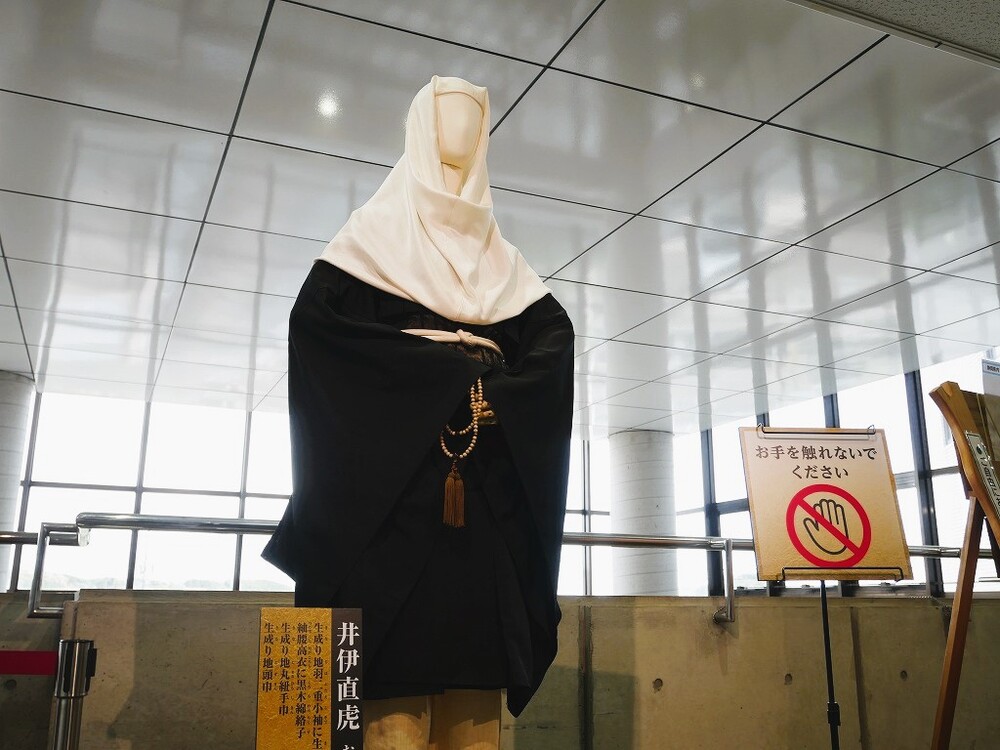
Up the stairs, Naotora’s costume is also on display near the stairs on the second floor passage. The hood was actually worn by Shibasaki.
Additionally, between the wall and the exhibition room is the “Onna Castle Lord Naotora Taiga Drama Museum Memorial Exhibition”.
The second floor is a special exhibition and permanent exhibition “Sengoku no Iitani”
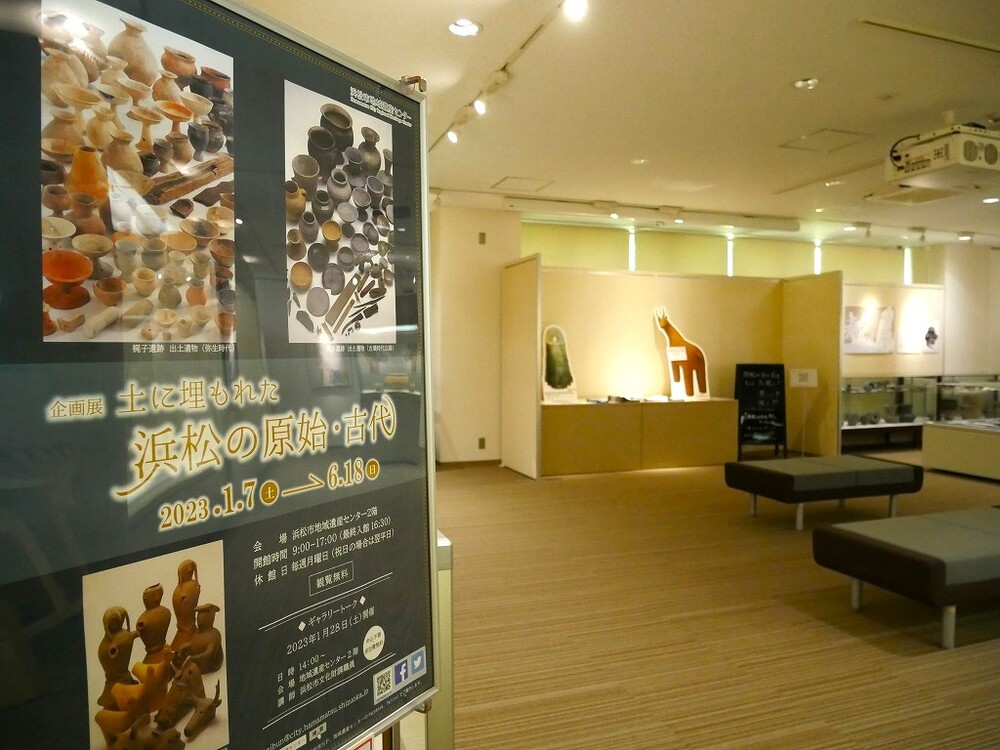
On the second floor, we are holding the special exhibition “Primitive and Ancient Hamamatsu Buried in the Earth” and the permanent exhibition “Sengoku Ii Valley.”
The exhibition will be held until Sunday, June 18, 2023. This museum exhibits unique artifacts from the Yayoi period to the Nara and Heian periods that were unearthed during excavations of ruins in Hamamatsu City.
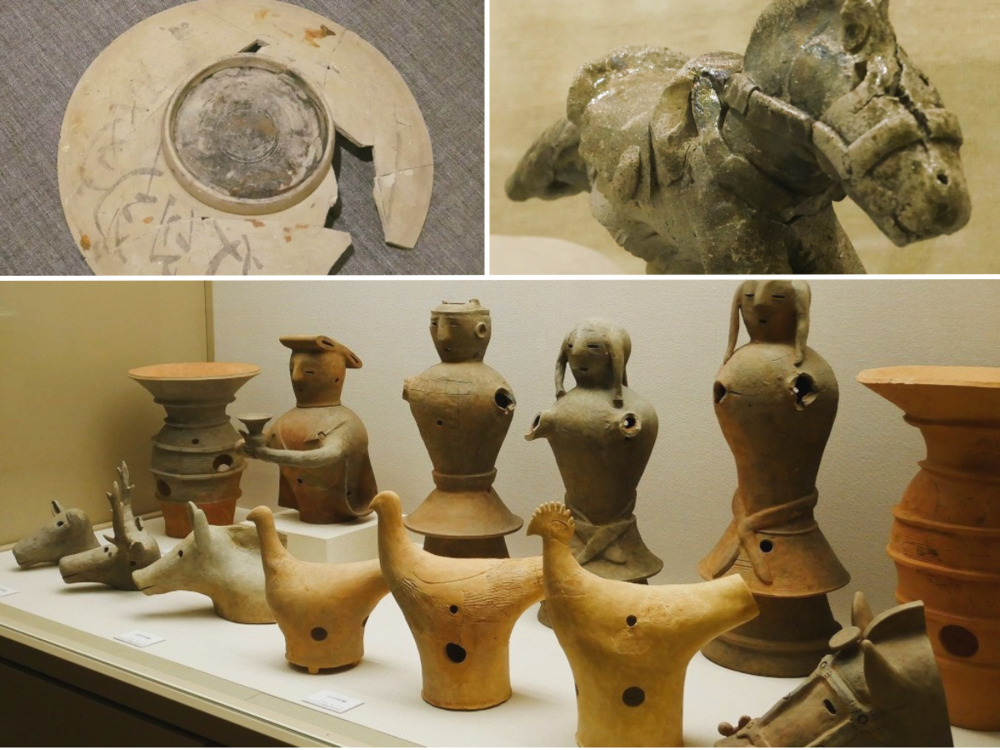
▲Top left: Earthenware pottery with ink calligraphy on the inside of a hill used as an ink pot, Top right: Touma, Bottom: Haniwa excavated from several ancient tombs in the city.
During the Kofun period, Hamamatsu was a point of cultural exchange because it was located between the center of the Yamato government in the west and the eastern provinces. In addition, various artifacts have been discovered from ruins dating back to the Nara and Heian periods, which indicate connections with the capital.
Although the ceramic horses are small, they are realistic, and the reins and stirrup stirrups (things you step on when riding) are well-made.
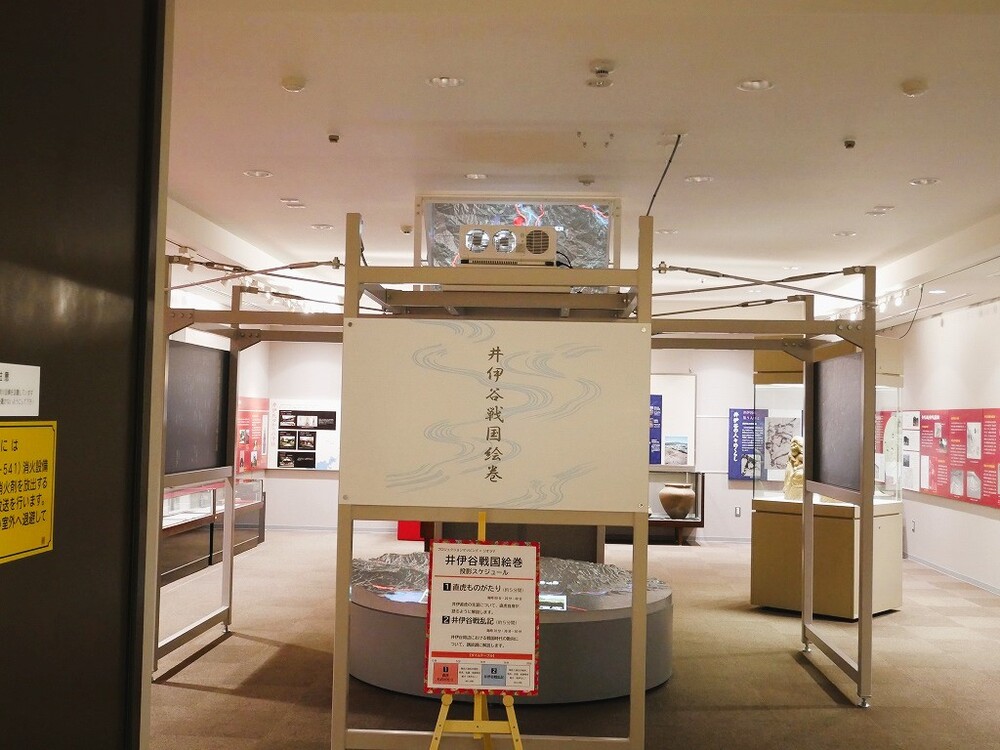
The permanent exhibition is located at the back of the special exhibition.
In front is the “Iiya Sengoku Emaki” corner, which combines projection mapping and diorama.
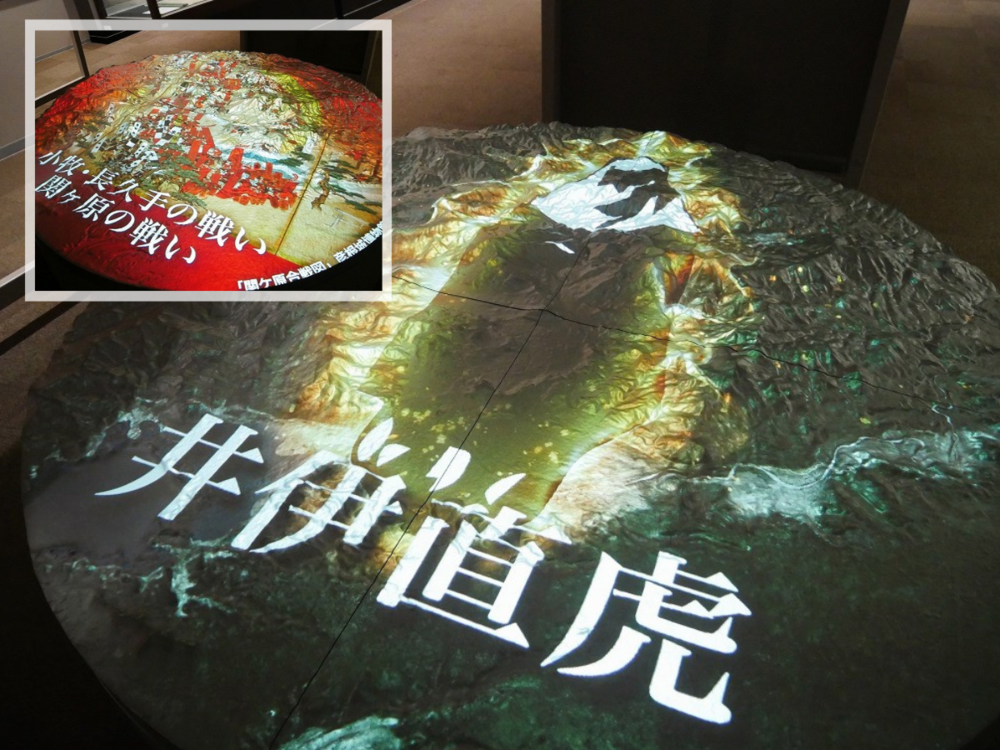
▲Upper left: “Iitani Senranki”, right: “Naotora Monogatari”
The video works of “Naotora Monogatari” and “Iiya Senranki” will be projected for 5 minutes each with a break in between, so please take a look at your favorite timing.
It has been well-received, saying, “It’s easy to understand where the Takeda army came from to attack Idani.”
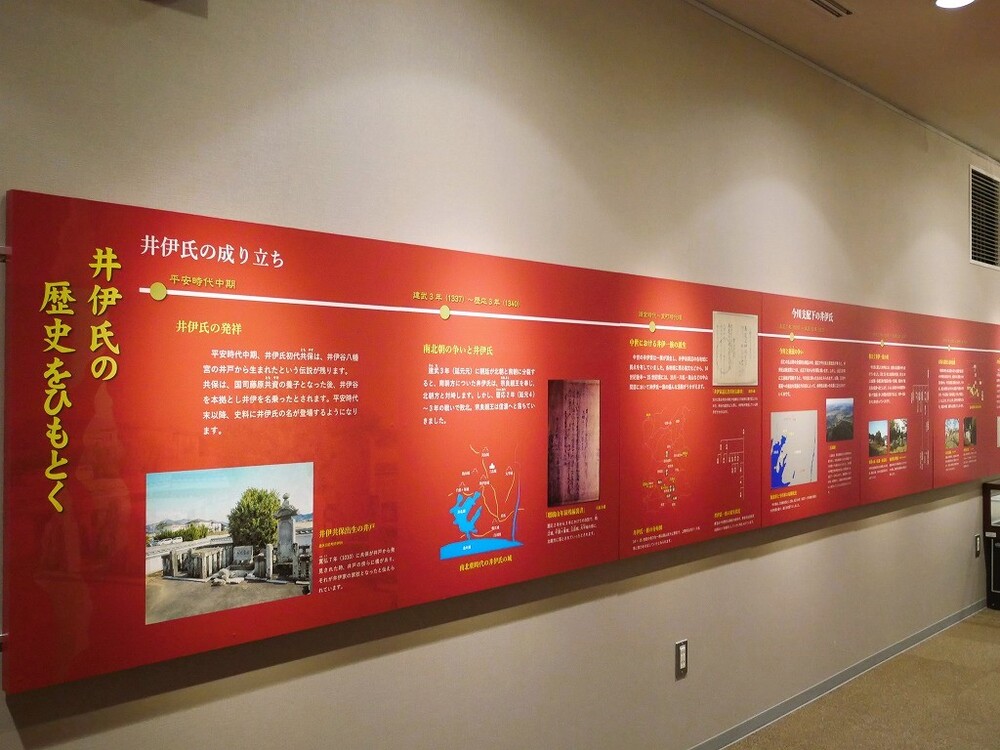
▲“Unraveling the history of the Ii clan” starting from the edge of the wall
After viewing the “Iiya Sengoku Emaki,” we recommend heading to the left and looking around the exhibition hall.
The Ii clan originated in the middle of the Heian period. The well where the first generation Tomoyasu Kyobo is said to have been born is called “Gosei-sama’s well” in the drama.
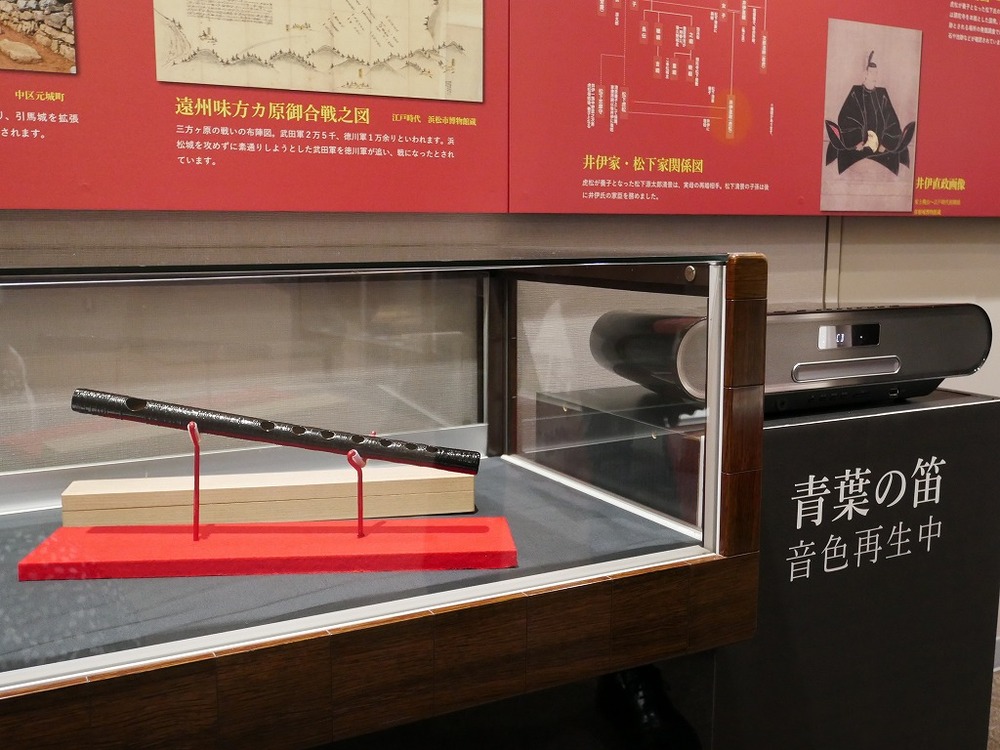
▲Naochika Ii’s favorite “Aoba no Fue” (replica)
A replica of the beloved flute “Aoba no Fue” of Naochika Ii, Naotora’s ex-fiancée, is in a display case.
The actual one is owned by Terano Rokusho Shrine (Shibukawa, Inasa-cho, Kita-ku). The sound of the Aoba flute (replica) is played from the speaker next to the display case.
Near the replica of “Aoba no Fue” is a war fan in a display case. This is the “Nichigetsushozusen” used by Naomasa during the Battle of Komaki and Nagakute.
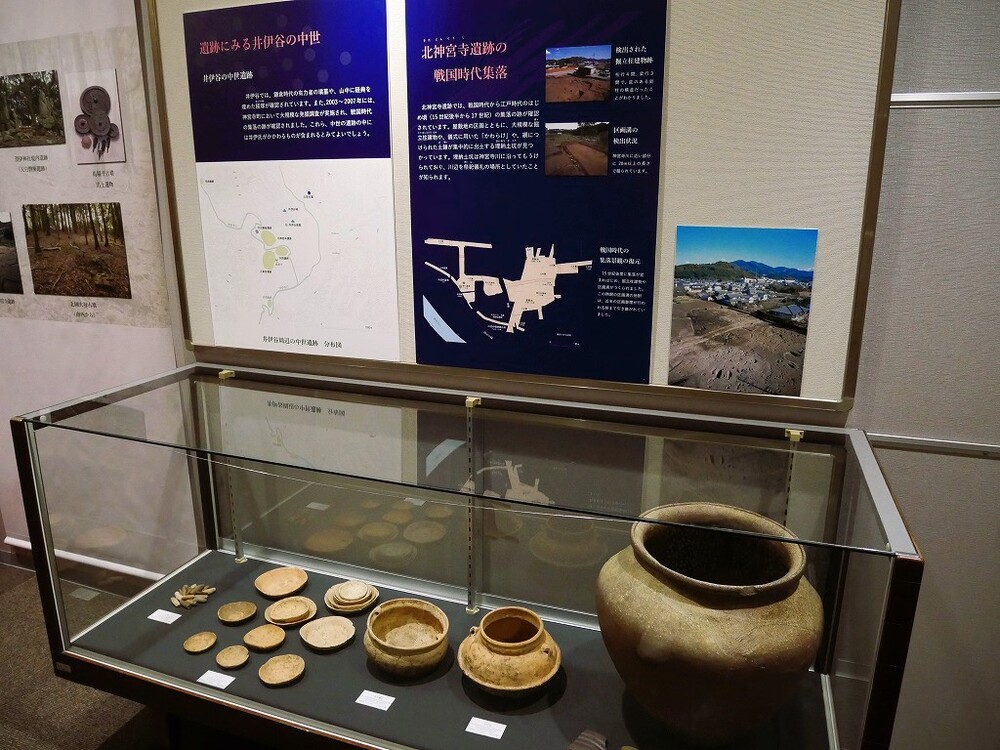
▲Medieval earthenware excavated from Inasa town (Kitajinguji ruins)
The medieval pottery excavated from Inasa Town may have been used by one of the Ii clan’s vassals.
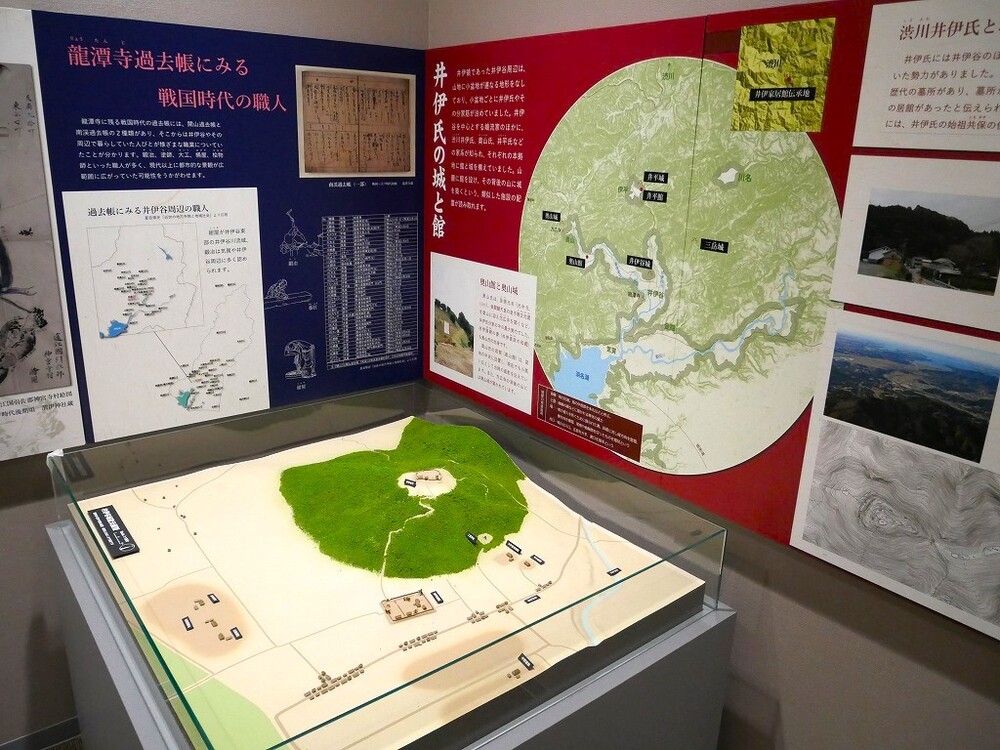
The restored model of Iidani Castle is made in a way that makes it easy to understand the relative positions of places related to Naotora, such as the ruins of Iidani Castle and the Ii clan residence.
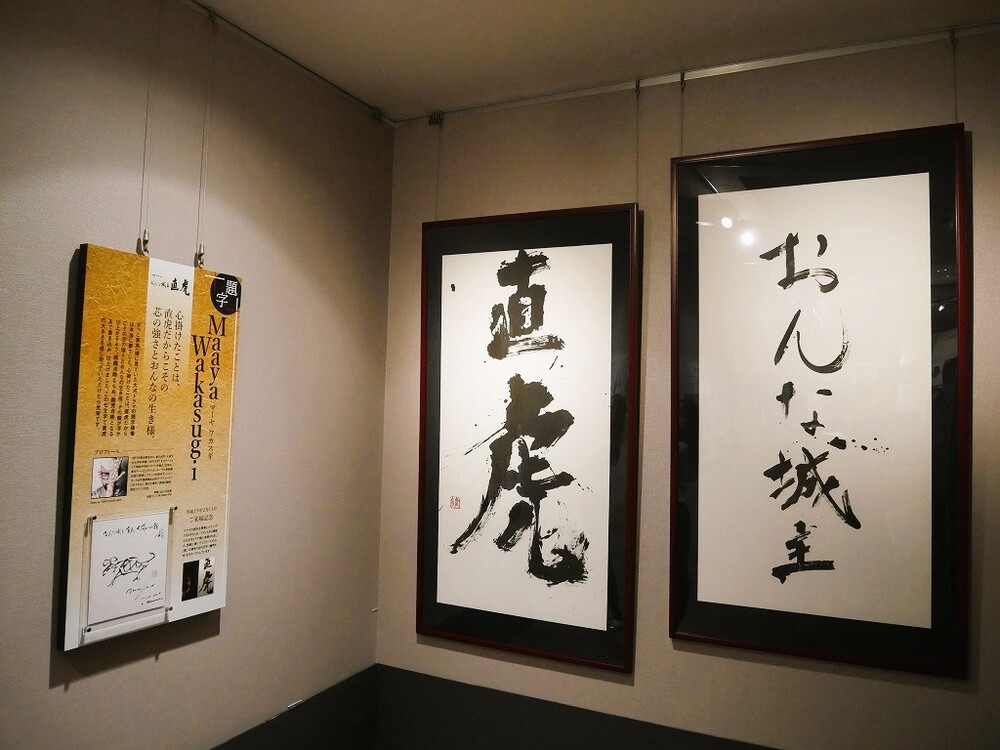
As you walk around the exhibition hall, the last thing you will see are the framed words “Onna Castle Lord” and “Naotora.”
Yes, this is the title of the drama. It’s the real thing, made by Maaya Wakasugi. Please take a look at this as the final part of the permanent exhibition!
<How to access Hamamatsu City Regional Heritage Center>
・Address : 616-5 Iitani, Inasa-cho, Kita-ku, Hamamatsu City
・Closed : Every Monday (the following weekday if Monday is a holiday), December 29th to January 3rd
・Telephone : 053-542-3660
・access :
Bus : Take the Entetsu bus 45 bound for Okuyama from Hamamatsu Station bus terminal No. 15, get off at Jinguji, and walk for about 5 minutes.
Railroad… Get off at Tenryu Hamanako Railway “Kanasashi” station, take Entetsu bus “45 Okuyama bound” from “Kanasashi”, get off at “Jinguji”, walk about 5 minutes.
・Parking: Available (free, 60 spaces)
Hamamatsu City Regional Heritage Center (Hamamatsu City Hall official website) (external link)
「https://www.city.hamamatsu.shizuoka.jp/bunkazai/maibun/index.html」
Let's go to Iidani Castle Ruins!
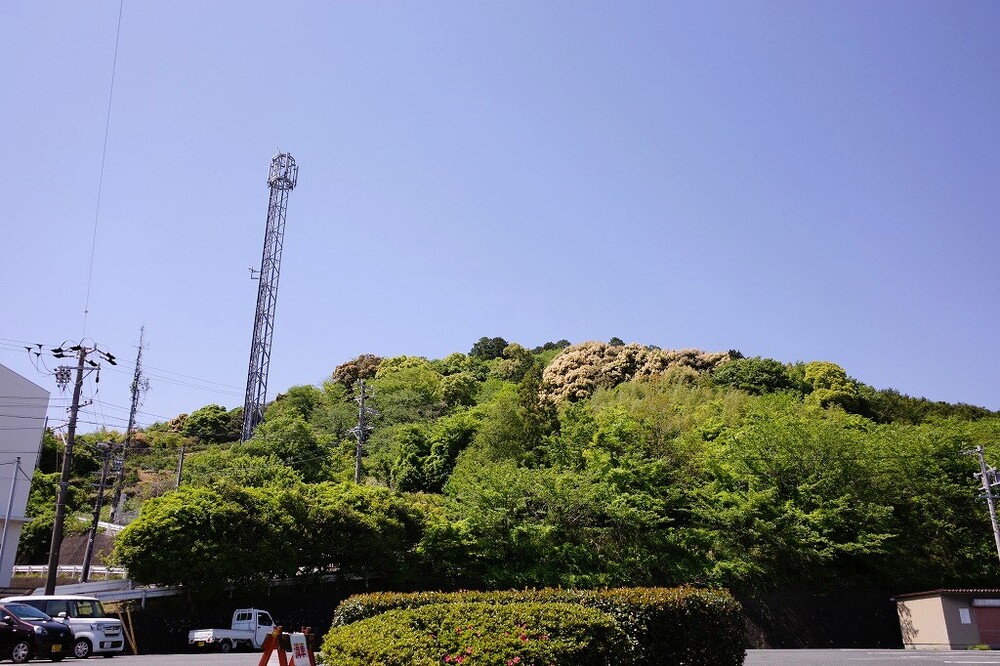
Head north from Hamamatsu City Regional Heritage Center.
Iiya Castle is a mountain castle built on a small mountain with an altitude of 114 meters and relative height (height from the foot of the mountain) of approximately 80 meters.
It was built as a residence for the Ii clan during the Sengoku period, and a kuruwa (a cirque) surrounded by earthworks was built on the top of the mountain. On the south side of Kuruwa you can see the Otemon Monzeki, and on the west side you can see the Monzeki with Atte.
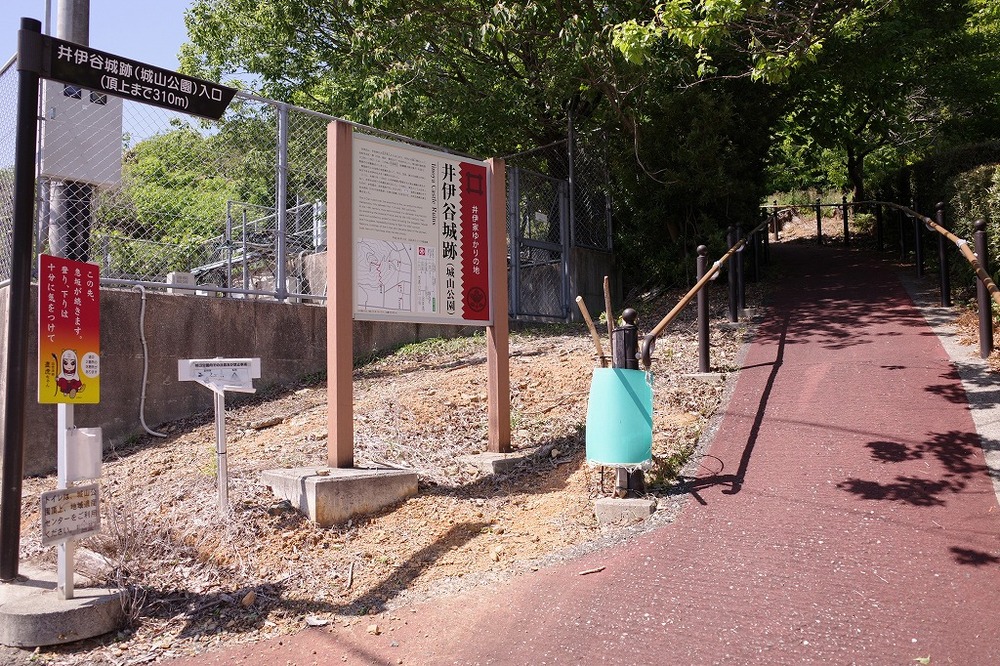
▲Free rental walking sticks available (must be returned after use)
It’s a 10-15 minute walk from the entrance to the castle ruins (depending on each person’s physical strength).
It may not look that steep from here, but guess what? ? There are benches for rest along the way, so take a break if you get tired. Of course I will take a break.
From the observation deck on the flat part of the mountaintop, you can get a panoramic view of Ii Valley.
6 years have passed since the drama aired. Whether you were there back then or not, please take a look at the Ii Valley that Naotora protected!
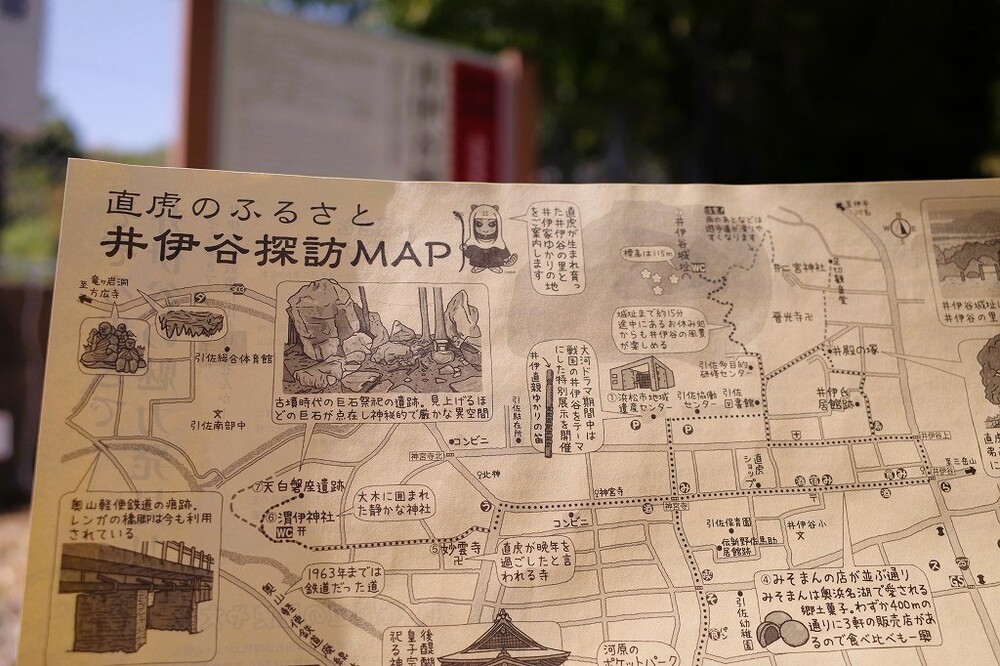
▲Ii Valley exploration map that is reassuring to have on hand
When touring the places related to Naotora, the Iitani Exploration Map is useful.
It was created when “Onna Castle Lord Naotora” was broadcast, so the store information remains the same, but the location of the ruins has not changed, so it would be reassuring to have it on hand.
Distribution locations are the Hamamatsu City Regional Heritage Center 2nd floor and the Hamamatsu City Inasa Collaboration Center, which stands next to it to the east. Please tell the staff that you would like to use the Collaborative Center.
*Both are only available when the museum is open.
Please note that there is no dedicated parking lot at Iidani Castle Ruins. If you are coming by car, please use the Hamamatsu City Regional Heritage Center parking lot.
Let's go to Ninomiya Shrine ~ Ashikiri Kannondo!
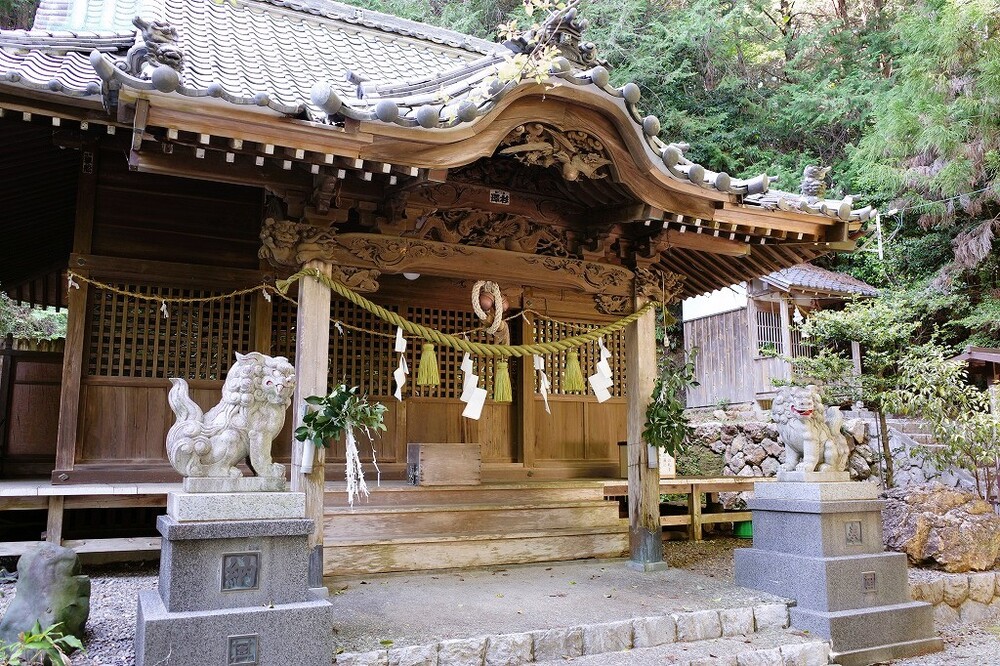
Ninomiya Ninomiya Shrine, which is located at the foot of the Iitani Castle ruins, is home to the Tadoma no kami Tajima no Mori (also known as Tadoma no kami), which is associated with the Tachibana family crest of the Ii clan, and the Soyoshi shrine that was worshiped by the Ii clan during the Nanbokucho period. Imperial Prince Munenaga (or Muneyoshi) is enshrined here.
The pedestal of the guardian dog in front of the main shrine has a tachibana crest inside the cross. This is the crest of the same shrine.
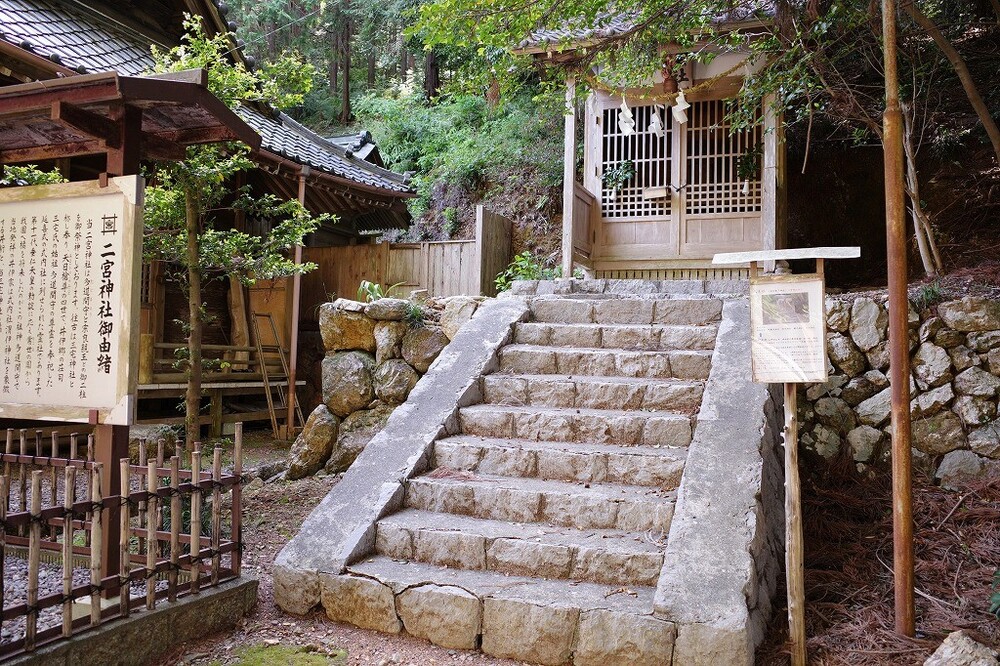
On the right side of the main shrine is Tennosha, which enshrines Tajimasha, whose deity is Ono Tajima no Kami Masatsugu. I gently put my hands together.
The bulletin board near the shrine is secretly popular among Naotora fans, as it posts information about Issei Takahashi’s appearance, who played Masatsugu.
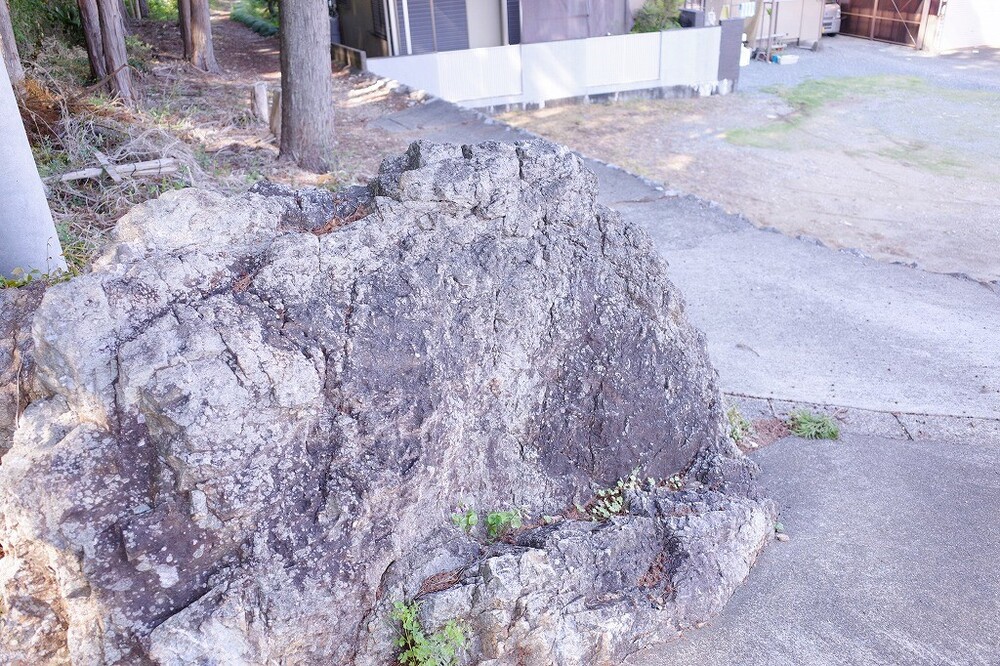
The left turn point from Ninomiya Shrine to Ashikiri Kannon-do is this large rock.
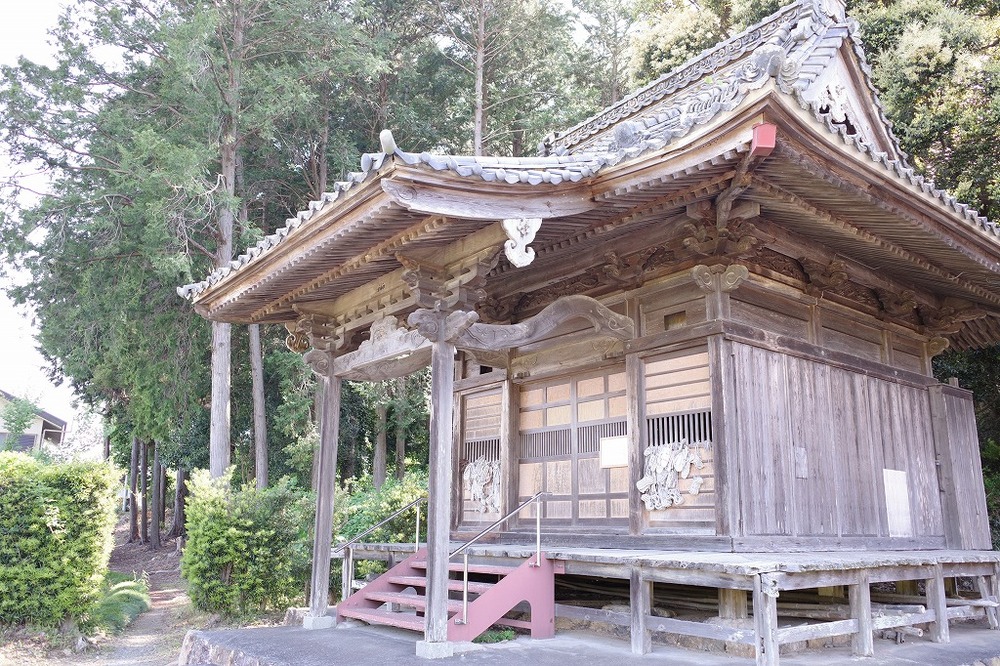
Ashikiri Kannon-do is deeply worshiped as the god of legs and knees.
Just a short walk from Ninomiya Shrine. Ashikiri Kannon-do stands in a rather large space.
It is said that during the Sengoku period, Naotora’s great-uncle, Ii Naomitsu, had a mansion in this area. There are no traces of Naomitsu’s mansion left, but the Ashikiri Kannon-do Hall, which is associated with Imperial Prince Muneyoshi, stands quietly.
Let's go to Idononozuka - Ii family residence ruins and waterway ruins!
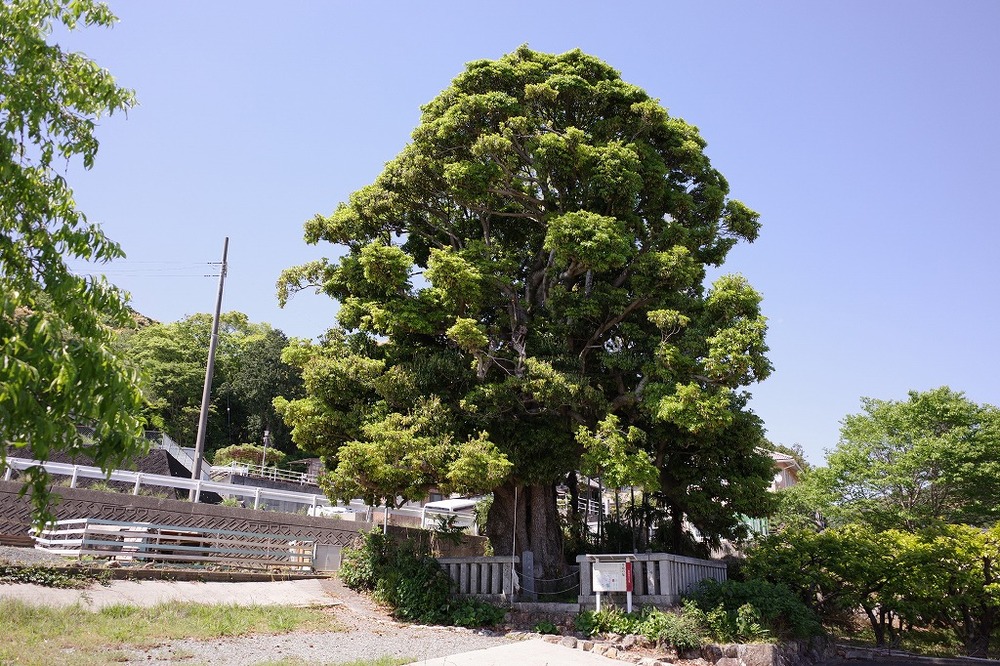
▲A tree that grows as if protecting the mound
About 5 minutes walk from Hamamatsu City Regional Heritage Center. Idonotsuka is a memorial tower for the brothers Naomitsu and Naoyoshi.
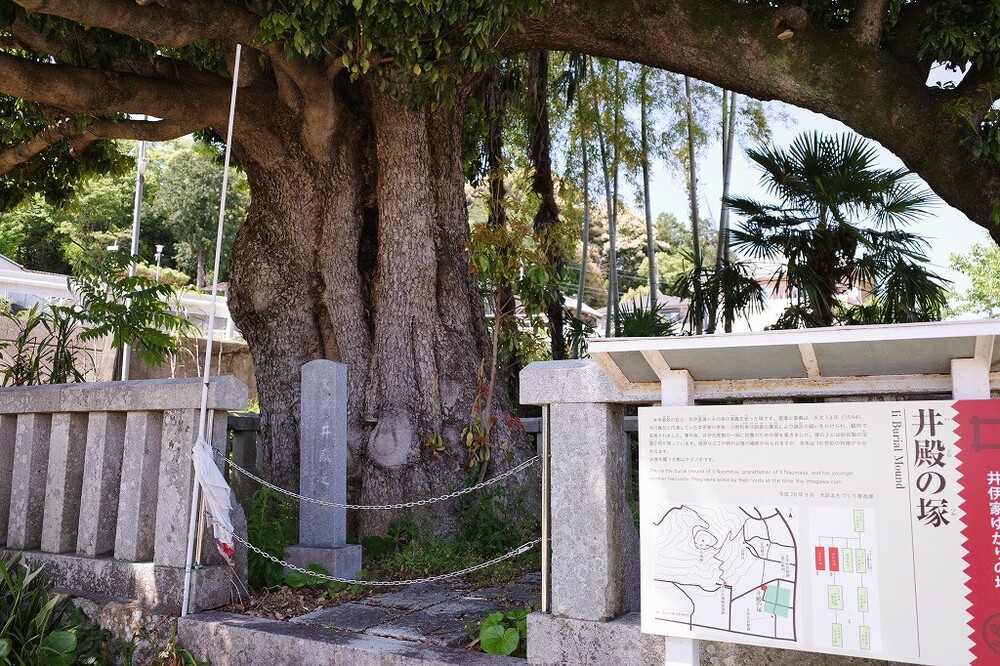
They were told that Ono Izumi no kami (Masatsugu’s father), who served Naotora’s father, falsely told Yoshimoto Imagawa that two people were plotting a rebellion. ) was killed for doing so.
On top of the mound, there are two Hokyointo towers lined up as memorial towers.
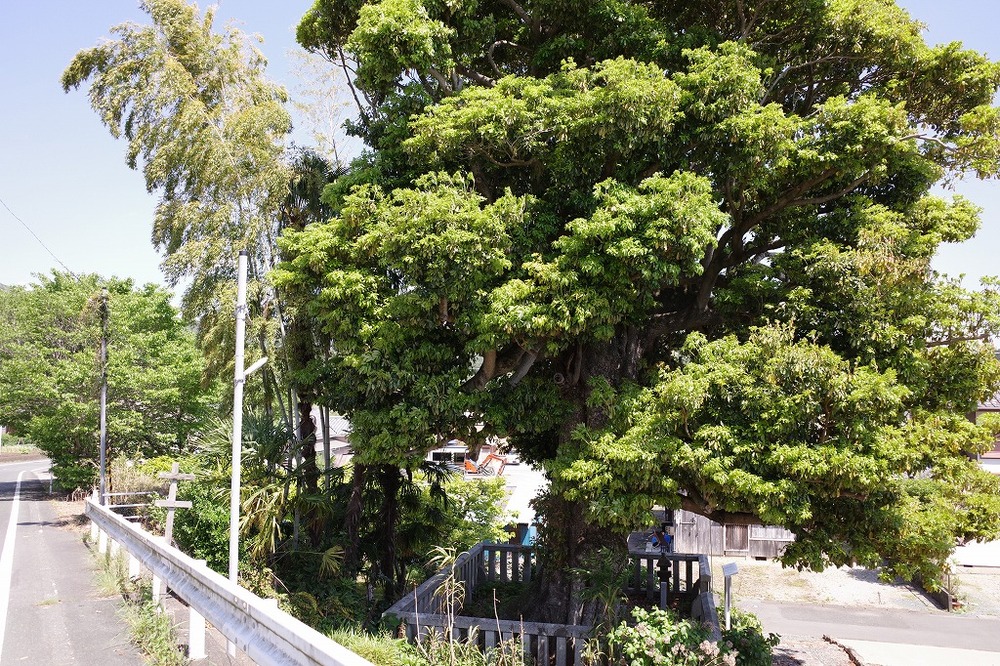
▲Idonozuka seen from the road
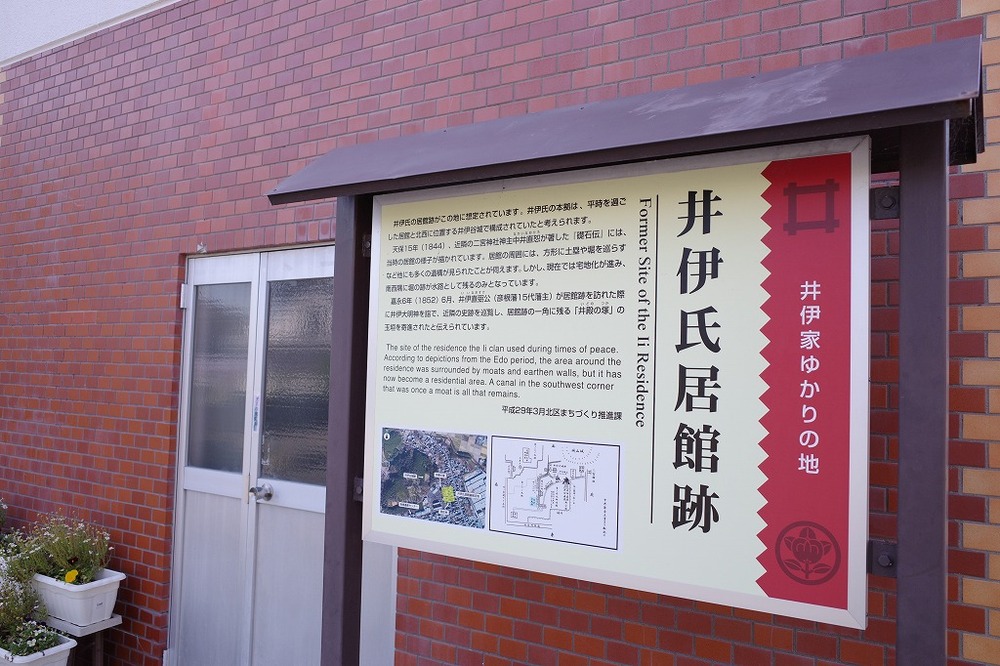
▲The information board about the ruins of the Ii clan residence is in front of the wall of the Inasa Town 4th Ward Community Center.
Just a short walk from Idonozuka. Mr. Ii’s residence is in this area. It is thought that they lived in the mansion during peacetime when there was no fighting going on.
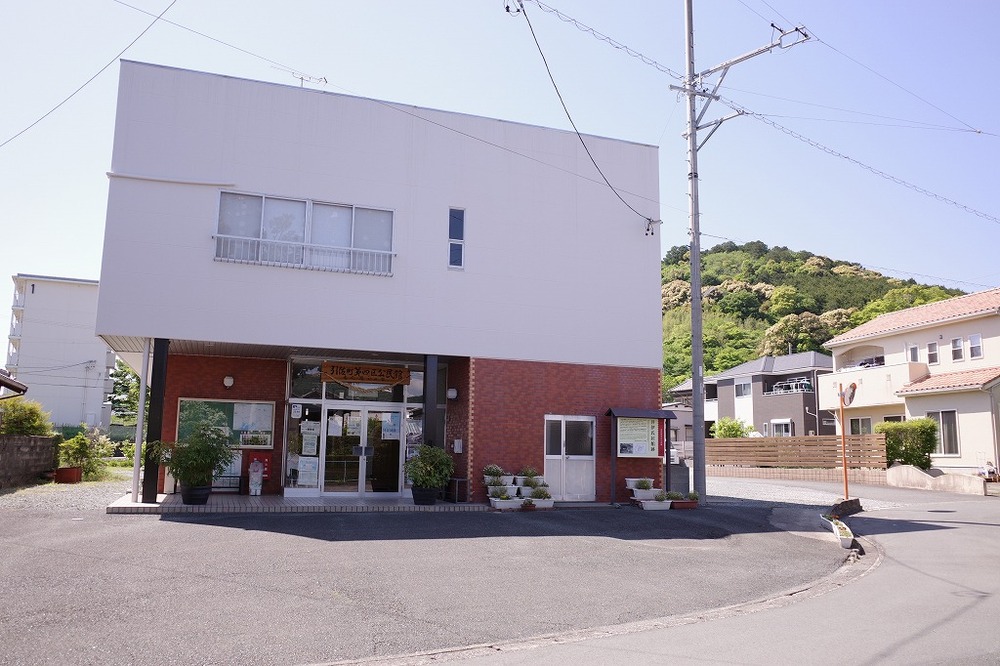
Nowadays, it has been turned into a residential area, and the remains of the residence’s moat remain as a waterway near the Inasa-cho 4th Ward Community Center.
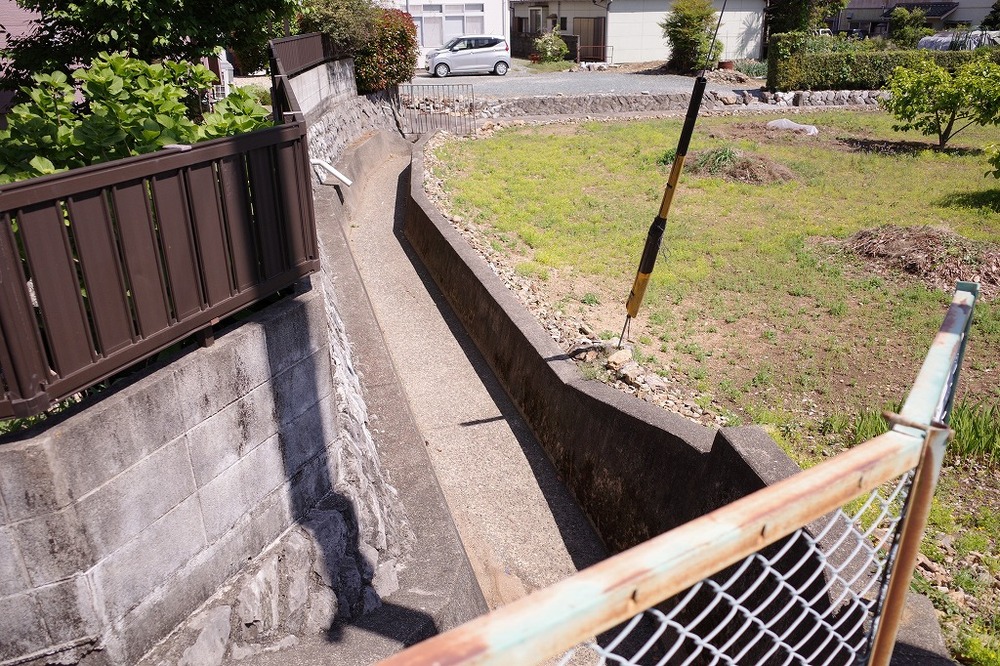
▲A waterway that remains of the Ii clan residence
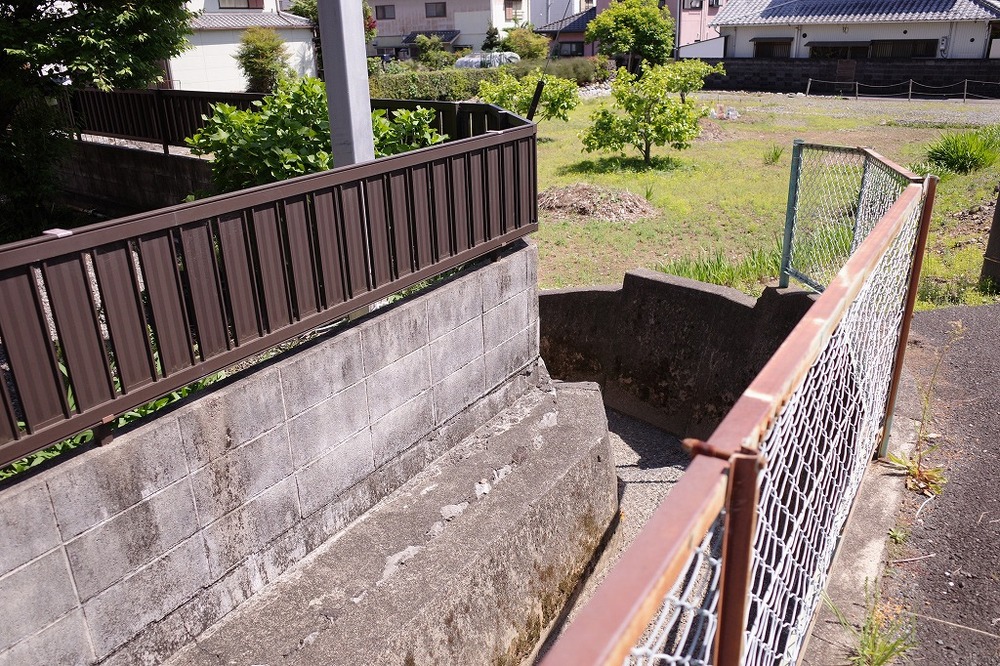
▲The place where the waterway bends at a right angle is said to be the remains of the southwest corner of the moat.
The waterway on the west side of the Inasa Town Fourth Ward Community Center is thought to be the remains of the moat that surrounded the residence.
Only a small portion of the moat remains as a waterway. When visiting, please be careful not to enter fences or fields.
Would you like to visit the land associated with the female castle lord who was at the mercy of the great powers and see what it is like now?


